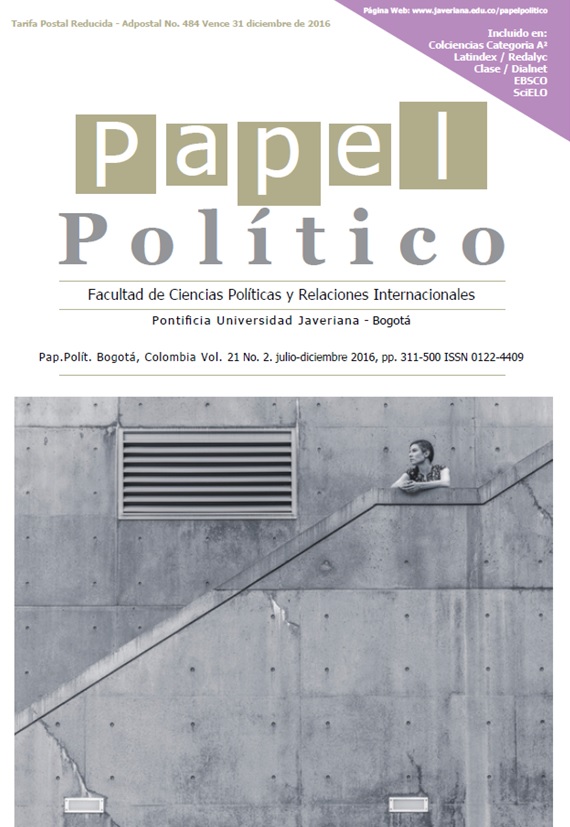Abstract
Son muchos los artículos, los textos y las publi-caciones que hacen referencia a la resistencia y la resistencia civil, pero muy pocos los que hablan de la noviolencia como uno de sus pilares. Es más, es tal su desconocimiento que noviolencia la escriben indistintamente (no violencia, novio-lencia o no-violencia). Por esa razón, el objeto de este artículo es darle un giro a estas ideas, y mostrar cómo la noviolencia es el sustento de las nociones de resistencia y resistencia civil. Gracias a los estudios y las luchas gandhianos es que estos dos conceptos cobraron mayor sentido y en esa medida es que se les puede reconocer como luchas distintas de las militares o bélicas. El fundamento teórico de la noviolencia permite ver tanto la importancia que tiene el factor de lo no armado como la relevancia del estudio de los medios-métodos y fines-estrategias. To-mar como base estas dos variables amplía las perspectivas de análisis y, sobre todo, permite in-cluir valores, como el de la paz, en medio de una constante tan predominante como la violencia. Pensar desde el punto de vista de la noviolencia y sus diferentes acepciones facilita entender y conceptualizar las luchas sociales de forma más precisa y sistematizada.This journal is registered under a Creative Commons Attribution 4.0 International Public License. Thus, this work may be reproduced, distributed, and publicly shared in digital format, as long as the names of the authors and Pontificia Universidad Javeriana are acknowledged. Others are allowed to quote, adapt, transform, auto-archive, republish, and create based on this material, for any purpose (even commercial ones), provided the authorship is duly acknowledged, a link to the original work is provided, and it is specified if changes have been made. Pontificia Universidad Javeriana does not hold the rights of published works and the authors are solely responsible for the contents of their works; they keep the moral, intellectual, privacy, and publicity rights.
Approving the intervention of the work (review, copy-editing, translation, layout) and the following outreach, are granted through an use license and not through an assignment of rights. This means the journal and Pontificia Universidad Javeriana cannot be held responsible for any ethical malpractice by the authors. As a consequence of the protection granted by the use license, the journal is not required to publish recantations or modify information already published, unless the errata stems from the editorial management process. Publishing contents in this journal does not generate royalties for contributors.


